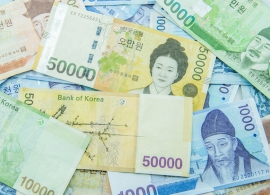Trading the South Korean Won

| Broker | Bonus | More |
|---|
The Won – A Short History
The Korean peninsula has been through many different currencies since the first time it was unified under a single government over 2,000 years ago. The Won was first launched in 1902 while the Korean Empire was in power, and was adopted again following the Second World War at the time when the country took its current form. The first known currency in South Korea dates back to around the third century BC when metallic tokens were exchanged. However, the first coins to be used date back to about 996 AD when the Goryeo Dynasty was in power. When the Joseon dynasty overthrew this dynasty in 1392 they established a currency of their own using paper notes that were printed on mulberry bark. In the years that followed, copper coins were minted, and in 1633 a currency known as the “Mun” was introduced. The Yang was the currency that followed next in 1892, with the Won being brought into being in 1902. When the Japanese invaded and launched the Japanese Colonial Period in 1910, the Won went briefly out of use. It is thought that the word “Won” may be derived from the words “Yuan” relating to the Chinese currency and “Yen” from the Japanese form of currency. When the Second World War came to an end, Korea was split into two territories, with the North being ruled by the Soviet Union-established communist government, and the South under a system of democracy – although both retained the Won as their official form of currency.
In October 1945, the Won was once more introduced into South Korea, and the Bank of Korea was established as the nation’s central bank in 1950. Because of inflation, the Won was replaced briefly in 1963 with the Hwan, which was pegged to the United States Dollar; but in 1962 the Won was once more introduced. In the 1980s, the Won was depegged from the Dollar and was instead replaced by a basket of international currencies to help the country to broaden its global trading opportunities; and towards the end of the 1990s, the government decided to allow the South Korean Won to become a free-floating currency.
Information About the South Korean Economy
The economy of South Korea is the 12th largest in the world in terms of its GDP. Since the 1970s, the country has been through a huge transformation, taking the economy from an underdeveloped state into one that is diverse and highly industrialised, bringing strong growth together with integration into a global trading environment. This has been facilitated by the government’s promotion of the importation of technology and raw materials instead of consumer goods, encouraging investment and savings over consumption. The major industries of South Korea include automobile production, telecommunications, electronics, shipbuilding, steelmaking and chemicals. The GDP of the country is now more than US$1 trillion, and its main exports comprise petrochemicals, semiconductors, ships, auto parts, computers and wireless communication equipment. Imports primarily include natural gas, steel, coal and crude oil and petroleum products. The nation also produces a number of important agricultural products such as vegetables, cattle, fish, eggs, chickens, milk and rice. The country’s major trading partners are Japan, China, Saudi Arabia, the USA, Hong Kong, Germany, Singapore and Qatar. There are some economical challenges faced by South Korea, which include the ageing population and the scarcity of younger workers, and a strong reliance on exports, which account for around 50% of the country’s GDP.


